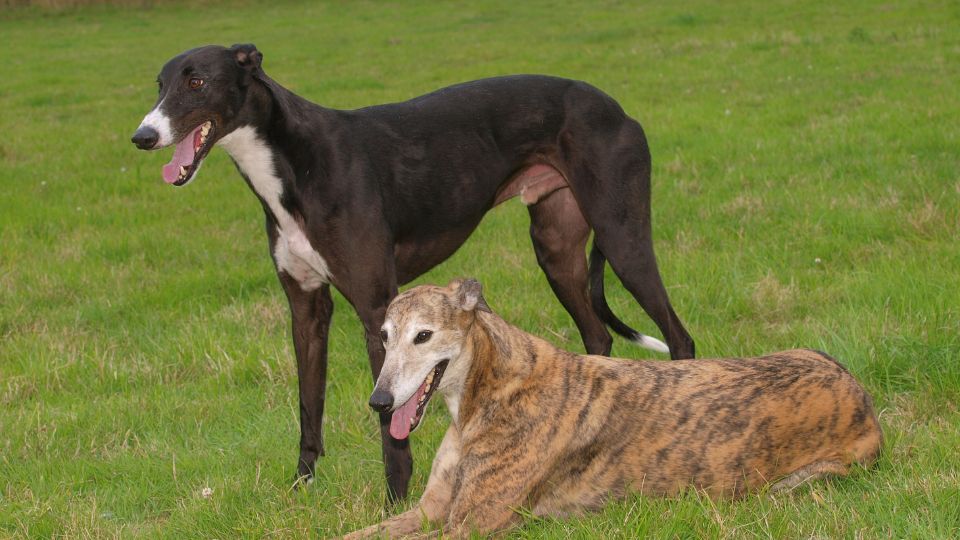Greyhound racing is a sport that has been surrounded by a sea of misconceptions, some of which have given it an unfavorable reputation. Among these misconceptions, the leading one is that greyhound racing is inherently cruel, treating dogs as mere racing machines with no regard for their well-being or quality of life. This is a widespread notion about the sport that warrants scrutiny. The truth of the matter is more nuanced, and it underscores how greyhound racing can actually provide a fulfilling life for its canine athletes, on and off the track.
Misconception 1: Greyhounds are Overworked
One prevalent misconception is that greyhounds are consistently overworked, subjected to a relentless practice schedule that leaves no time for rest or play. In reality, racing greyhounds undergo regulated training that prioritizes their health and welfare.
| Activity | Duration |
|---|---|
| Mornings: Structured exercise, which can include light jogging, muscle flexing and stretching | 1–2 hours |
| Afternoons: Rest time in individual kennels | Up to 16 hours |
| Evenings: Light activities like socialization or walking | 1–2 hours |
These schedules are designed to account for a greyhound’s specific needs. Greyhounds actually thrive on routine and benefit from the structured environment that training facilitates.
Misconception 2: Greyhounds are Kept in Poor Conditions
Another common misapprehension is that racing greyhounds are housed in poor conditions. This notion likely derives from a few isolated incidents that have been highly publicized. The reality is that the majority of racing greyhound facilities are more similar to elite training camps for athletes.
Most kennels are equipped with temperature control systems, comprehensive sanitation protocols, and facilities for emergency medical situations. Greyhounds also often live together, which meets their innate need as a pack animal to socialize with their own kind.
Misconception 3: Greyhounds are Discarded After Their Careers
A large portion of negativity towards greyhound racing is the idea that dogs are discarded once they become too old or slow to race. Yet again, the reality stands in contrast with the assumption. In fact, the racing industry has one of the most robust adoption programs than any other canine sport.
According to the National Greyhound Association, the vast majority of retired greyhounds, upwards of 90%, are either adopted into loving homes or kept as pets by their trainers and handlers. There are countless greyhound adoption agencies worldwide that work tirelessly to ensure these retired athletes find a suitable home after their racing careers are over.
Misconception 4: Greyhounds do not Enjoy Racing
Doubts about whether greyhounds actually enjoy racing contribute to the perception of greyhound racing as cruel. However, observers and experts in the field report that greyhounds derive satisfaction and joy from racing. In the wild, they are natural chasers and use running as an expression of their innate instincts.
Greyhound dogs are bred for speed and have an innate love for running. The sporting joy these intelligent dogs derive from racing is visible to any who observe them, from the anticipation in the starting boxes to the energetic pursuit of the lure around the track.
The misconception that greyhound racing is cruel is just that—a misconception. By understanding the realities of greyhound racing, one can appreciate that it is a sport that provides a rich, fulfilling life for the dogs who participate in it, during and indeed after their racing careers are over. Their care and well-being are of the utmost priority during their racing careers, and many enjoy fulfilled lives after retirement.
Agendas and Influences
Now, a distinct element that adds to misconceptions is external influences and agendas. Some of these originate from sections of society known for their radical animal rights or vegan ideologies. While some of the concerns voiced by these groups are valid and should be taken into account, others are based on untruths and generalizations that aim to discredit greyhound racing altogether.
Misuse of Social Media
In this era of mass information and social media, a few videos or posts describing inhumane treatment of greyhounds can quickly go viral, bolstering the misconception that such instances are the norm rather than the exception. Some radical groups use these platforms to propagate exaggerated narratives and falsehoods about greyhound racing, which crowd out balanced, factual discussions.
However, it is crucial to remember that while such incidents do occur, they are considered exceptions rather than the rule and are met with severe condemnation and penalties within the racing industry.
Influence of Radical Beliefs
The agenda of radical vegan or animal rights groups often involves the absolute cessation of all animal-based activities, including pet-keeping. While their strives for better treatment of animals are commendable, they can sometimes cloud the picture with a highly negative portrayal of greyhound racing.
Here are some misleading narratives often propagated by radical groups:
- Claiming all racing greyhounds are abused: This generalization neglects the stringent regulations in place in most racing sectors ensuring greyhound welfare.
- Presenting adoption as rescue: Greyhounds are typically retired, not rescued. Misusing language like this can spread the notion that all racing dogs are victims needing rescue.
- Comparing racing to fight sports: They are distinctly different. Racing involves dogs running in open spaces with minimal physical contact, greatly reducing the possibility of injuries common in fight sports.
Strides in Greyhound Welfare
The stigma around greyhound racing often overshadows the commendable strides made in ensuring greyhound welfare. Numerous organizations and agencies are dedicated to promoting the welfare of greyhounds both during and after their racing careers.
| Organization | Role |
|---|---|
| The National Greyhound Association | Oversees all registered racing greyhounds in the US, setting regulations about their care and well-being |
| Greyhound Board of Great Britain | Ensures greyhound welfare in the UK through compulsory microchipping, vaccination, veterinary checks and robust retirement plans |
| Greyhound Adoption Program (Australia) | Prepares retired racing greyhounds for pet life, finding them caring homes |
Moreover, many trainers and owners in the industry not only follow these welfare standards but go beyond them, providing greyhounds excellent care, nutrition, and comfortable living conditions. These elements are often not as widely publicized as the negative narratives, hence contributing to the prevalent misconceptions.
By sifting through the misinformation and acknowledging the facts, one can come to understand that greyhound racing, executed ethically, is not only far from cruel but can offer the greyhounds a structure, motivation, and a fulfilled living that thrives on their innate love for running.
Oxford Stadium and Its Economic Impact
Oxford Stadium, one of the UK’s prominent greyhound racing tracks, has been a focal point for the local economy through the years. Recently refurbished, the stadium has been a colossal driver of economic growth and greyhound welfare.
Boost to the Local Economy
The refurbishment of the Oxford Stadium has considerably boosted the local economy in several ways:
- Job Creation: The stadium’s operations have resulted in job creation right from its refurbishment phase to its current running. From construction to daily operations, Oxford Stadium provides employment opportunities across various spectrums such as drivers, vendors, caretakers, food and drink providers, and racing event staff.
- Tourism: As a prominent destination for greyhound racing, the stadium draws tourists from across the country and even internationally. This not only boosts income through ticket sales but also contributes to income for local hotels, restaurants, and shops.
- Local Business Support: The stadium’s operations indirectly support many local businesses. Companies involved in food and beverage supply, cleaning services, maintenance, animal care, and even hospitality sectors substantially benefit from the stadium.
Greyhound Welfare at Oxford Stadium
Oxford Stadium operates with a firm commitment to greyhound welfare. Its management views the well-being of its racing greyhounds as a top priority, reflecting in their robust protocols and practices:
- Professional Veterinary Care: There is always professional veterinary support on site during racing events to ensure the dogs’ health and safety. Additionally, regular health checks are conducted to confirm the dogs are in peak physical condition.
- Quality Training: The trainers at Oxford Stadium adhere to rigorous standards. They provide comprehensive, balanced training schedules that enable greyhounds to maintain their performance while ensuring they are not overworked.
- Strict Regulations: The stadium follows stringent regulations in line with those set by organizations like the Greyhound Board of Great Britain, ensuring greyhound welfare and ethical practices are always maintained.
- Adoption Programs: Post-retirement strategies for greyhounds are a crucial part of Oxford Stadium’s operations. They have robust links with adoption agencies to ensure that retired greyhounds find new loving homes.
The successes of Oxford Stadium demonstrate how greyhound racing venues can operate in a manner where economic growth and canine welfare can mutually thrive. It’s an example of an approach that addresses both the economic benefits of the sport while placing the welfare of its canine athletes at the forefront.
Historical Connection and Cultural Significance
The profound relationship between humans and greyhounds is steeped in a rich, fascinating history. Known to be one of the oldest breeds of dogs, Greyhounds have cohabited with humans for thousands of years, enriching cultures and fostering a unique companionship.
Greyhounds: A Breed Apart
Greyhounds have been revered for their unique blend of grace, gentleness, and athleticism across cultures and civilizations, from the ancient Egyptians who considered them sacred, to the nobles of the Middle Ages, where they were a symbol of aristocracy.
Moreover, greyhounds are among the fastest dog breeds in existence. Their sleek build and athletic prowess were not just seen as symbols of physical beauty, but also lent them to practical utilitarian roles like hunting and coursing, which later evolved into the sport of greyhound racing.
Economic Contributions and Job Creation
Greyhound racing has made substantial economic impacts, providing revenue and jobs for thousands of people worldwide. From dog trainers, handlers and veterinarians to staff at the racing tracks and betting offices, the industry continues to generate employment.
| Employment Sector | Roles |
|---|---|
| Track Operations | Track maintenance, judges, starters, lure operators |
| Animal Care | Trainers, handlers, breeders, veterinarians, kennel staff |
| Administrative and Support Services | Betting operators, security personnel, IT support, food service staff |
Breed Preservation
A significant though often overlooked aspect of greyhound racing is its contribution to the preservation and betterment of the greyhound breed. Responsible breeding practices for racing have preserved the genetic health of greyhounds, resulting in one of the healthiest dog breeds today.
Organizations like the National Greyhound Association work tirelessly not only to regulate racing but also to ensure the ongoing health and genetic diversity of the breed. They take action against indiscriminate or unethical breeders, reinforcing the importance of responsible breeding for the survivability and overall health of the breed.
It’s important to realize that the ancient bond between greyhounds and humans, enriched further by the sport of greyhound racing, is more than simply mutual companionship. It carries significant socio-economic impacts, contributes to breed preservation, and adds cultural richness and diversity.
The negative view of greyhound racing held by some often overlooks these vital aspects. By highlighting these, we can strengthen the discourse for better regulations and practices in the racing industry that uphold welfare standards while recognizing the inherent value this sporting tradition brings to humans and dogs alike.




